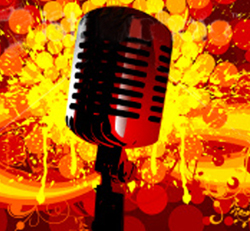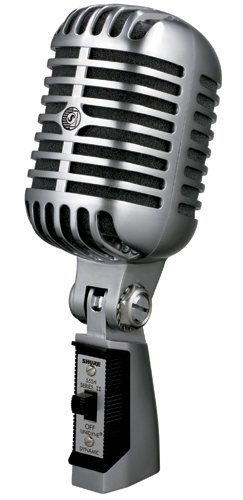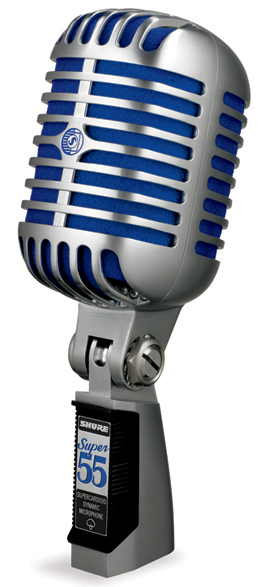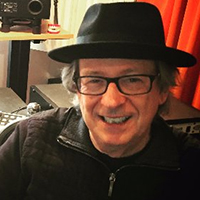How do you review an icon? Often seen in photographs along with iconic people from dictators to heads of state to rock ‘n’ roll stars, the Shure 55 is the most recognized microphone in the world.
First produced in 1939, the original Model 55 Unidyne microphone was the first single-element unidirectional dynamic microphone. From its beginnings at that time being a cardioid pattern microphone, its smaller size made it a true classic that was affordable and accessible to all. Then as well as today, its impressive “art nouveau” satin chrome-plated die-cast case was closely equaled by its breakthough performance.
The Model 55 (unlike competing omnidirectional mics at that time) was able to operate in close proximity to loudspeakers without creating feedback. It’s characteristic Shure presence peak made it excellent for vocal pickup in any situation from radio broadcast to live shows.
What most people know and think as the 55 was called the Model 55S and was a smaller version of the original Unidyne 55. First produced in 1951, Shure now makes an updated version called the 55SH Series II, which is essentially the same as the 70-year old Unidyne except for modern internal acoustic components are used to bring it up to present day requirements.
Both the cardioid polar pattern and the same presence peak of the original 55 are incorporated into the 55SH along with an on/off switch, a new cartridge shock mount to reduce stand noise, and a redesigned swivel stand mount that permits tilting from 45 degrees forward to 80 degrees backward.
And Now The Super 55
Most of the 55SH’s features and touchstones of quality come with the Super 55 deluxe vocal microphone. Exactly the same sized chrome-plated die-casting is used and differences begin with an enclosed supercardioid element behind a vibrant blue foam material.
A blue “circle S” logo is on the Super instead of the black logo seen on the 55SH and then there is that shiny new Super 55 nameplate. The 55SH has a wider low frequency response while the Super 55 has more high frequency extension but retains the 55SH’s “voicing” for natural-sounding vocal/speech recording.
But say goodbye to the old on/off switch on the Super—these days it does not have a place on stage and especially not in the studio. (Good riddance!) The Super 55 is also heavier and 5 dB more sensitive than the 55SH model.
In The Studio
In the studio there are plenty of good applications for the Super 55. I used it without an EQ or compressor—only my RTZ Professional Audio 9762 Dual-Combo Mic Preamp, a super high-end Neve 1272 copy.
I recorded a Martin D28 acoustic guitar with the mic positioned above the twelfth fret. The voice-tailored frequency response worked out well to produce a bright sound with less emphasis on the guitar’s boomy bottom end.

















